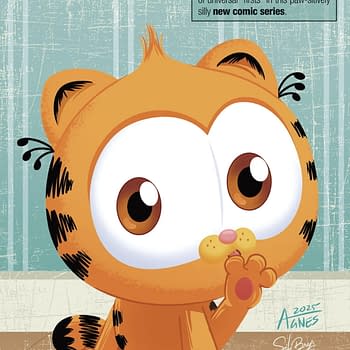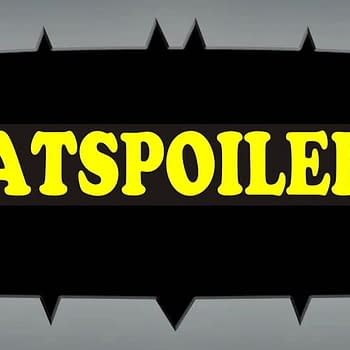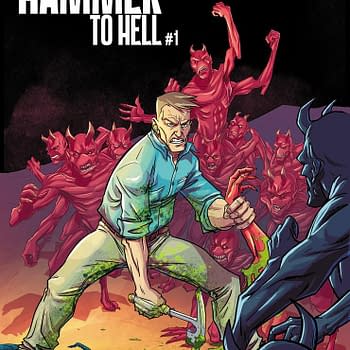Posted in: Comics | Tagged: charles m schulz, charlie brown, Comics, entertainment, Insufferable #6
Thor's Abbreviated Comic Review Column – Peanuts: A Tribute To Charles M. Schulz, Insufferable #6
THIS WEEK'S REVIEWS:
Peanuts: A Tribute to Charles M. Schulz
Insufferable #6
Peanuts: A Tribute to Charles M. Schulz (KaBOOM!, $34.99)
By Graig Kent

My kids (now 13 and 6) weren't alive when Peanuts was an active concern, and certainly newspapers — the primary delivery vehicle for Peanuts — haven't ever been an active part of our household (do they still even run the strip?) because of the internet. Yet, both of them are more than familiar with Charlie Brown and Snoopy at the very least. Those holiday specials, particularly A Charlie Brown Christmas, It's the Great Pumpkin, Charlie Brown, and Be My Valentine, Charlie Brown, are still mainstays on network television, and the myriad of Peanuts paraphernalia over 65 years has become practically inescapable. This past weekend, for instance, I was clearing out my basement and came across numerous Peanuts related items, including a felt pennant featuring Linus that used to hang in my childhood bedroom, a copy the wonderful Schulz and Peanuts: A Biography by David Michaelis, and a full set of Charlie Brown's 'Cyclopedia.

But it's clearly Schulz's creation has had a greater impact on many more people than I, an impact that is much stronger and more quantifiable to them. With Peanuts: A Tribute to Charles Schulz, KaBOOM! (BOOM! Studios' all-ages imprint) has given space for 40 amazing creators from the field of comic books, comic strips, web comics and cartoons a forum to express their appreciation for Peanuts and the man who shepherded it for so long. Some of the entries in this books are simple pin-up pages done in the style of the artist, such as Jeff Lemire, Art Balthazar and Colleen Coover, while others attempt a form of alt-Peanuts comic strip storytelling. Many entries are personal strips about the impact of Peanuts and/or Schulz on their lives, as developing children or as professional illustrators. Within its roughly 140 pages of content, there is a depth of variety, which serves it well. My initial fear for this book was that it would be a lot of creators aping the master, or that it would be wall to wall sentimentality. What resulted instead is a testament to how robust the strip is, not just in how the characters can survive some radical reinterpretation, but how the subtexts that often permeated the strip can be drawn out into stories all their own.

The back-end of the book, whether it's intentional or not, features Peppermint Patty pretty prominently, with four incredible stories from Liz Prince, Shaenon K. Garrity, Melanie Gillman, and Molly Ostertag. Garrity's "The Telling of Faults" has the subheading "based on a true story", yet happens to be one of the most Peanuts-like stories in the book, brilliantly capturing childhood angst and defining moments of self-awareness. Both Prince's story as well as Gillman's deal with identity, where Prince's marries it deep within a Schulz-style metaphor as Patty tries to figure out how to be comfortable attending a school dance, Gillman's deals with the fuzziness of childhood sexual identity, or being "weird", head-on, from Marcy's point-of-view with absolutely beautiful execution. Ostertag's story focuses on the bond of friendship, highlighting how tenuous the can be when young, as Patty gets a new dog and Marcy feels like she's being replaced.
This is an exceptionally high quality, engaging and entertaining read, and yet it doesn't feel like a complete experience. Coming to the end of the book, it felt like there were so many more stories to tell from so many other creators. Despite all the different perspectives put on Peanuts, its gang, and its creator, there still feels like there's so much more to be said, examined, dissected, interpreted, etc. Although its rewards are many, the length of the book feels slim relative to its price tag (about 120 illustrated pages for $35 is exceptionally steep), more creators and more content would certainly help. Or a shallower price tag (this is a hardcover, so the presumption is a softcover would be notably cheaper) and making this the first in a series would be even more welcome.
Schulz passed in 2000, and while KaBOOM! has helped keep Peanuts alive with new comic books done in the style of Schulz, it's in these alternate interpretations done in their own style or with the hearts of the creators on their sleeve that it feels like Peanuts still lives on. For many the biggest concern about the forthcoming Dreamworks Peanuts movie is that it won't be true to Schulz, but if the creative team approach it with reverence and admiration for the source, much like almost every entry in this book., they don't have to be exact to be successful. Just like these stories, which takes Peanuts to new and different places and styles than it has been to before, so too does a big-screen, feature-length, computer-animated movie. After reading this book, I'm feeling more optimistic about it.
Graig Kent's favourite volume of Charlie Brown's 'Cyclopedia is Volume 1: FeaturingYour Body. There was nothing really scandalous — not a single image or description of the reproductive anatomy — just plenty of "super questions and answers and amazing facts" about our physical selves, like "why are you ticklish" or "how do you get a cavity in your tooth" or "can you get rid of warts in a graveyard at midnight".
Insufferable #6 (IDW, $3.99)
By Cat Taylor

Needless to say, I don't know what's happened between issue one and issue six but now the estranged father-son team of Nocturnas and Galahad are reluctantly working together again and attempting to figure out who's behind the latest crimes that have brought their old enemies together. As he was in his introduction, Galahad is still more obsessed with public perception of himself and the status of his income from personal endorsements than he is with actually getting to the bottom of malevolent events.
Mark Waid doesn't write Galahad as ineffective, but rather as someone more concerned with self than with fighting crime. If the ends justify the means, Galahad is a hero. However his motivations are a lot closer to those of the villains than to those of his father and traditional hero, Nocturnas. This isn't exactly a new idea as we've seen it many times since Alan Moore's Watchmen brought the idea of the non-altruistic hero to the public at large. Regardless of originality, Waid is a writer who is able to tell entertaining stories within the flawed hero genre, as he has proven time and time again. His partner in creating and telling this story, Peter Krause, provides art that is ideal for this series. It has the classic gritty 1970s Marvel and DC style popularized by artists like Neal Adams and Frank Miller. The one place where he breaks that style, and the tone of the story shifts to the humorous, is when Galahad is contemplating his response to a particular situation. His thoughts are shown as one-panel potential outcomes that are drawn in a Sunday-funnies comical style that gives the story brief and effective comic relief.
While the two issues of this series that I have read are among the better super-hero books on the market today, they haven't broken any new ground. Although that's not a requirement of a good comic book, there's that issue referred to earlier about the vast number of choices for comic book fans. So, if a book is merely good rather than great, it still has to hook readers with something. Incredible characters are often that hook. Marvel and DC have it easy on that front. Their entire pantheons have been so fully established that almost everyone's favorite heroes are from one of those two companies. A new title like this has a tremendous challenge in that area.
The Batman and Robin/Nightwing archetypes here strive to do that with an "ungrateful prick of a former sidekick" twist. It's a concept that bears exploring but after getting the gist of it, I wonder if many readers feel invested with such an unlikeable character as Galahad as the star. Of course Nocturnas is there to be the ideal hero, but he's kind of bland. Nowhere is that made clearer in the story than in the fan reactions and product endorsements of Galahad. In fact, a scene where Galahad's agent says, "Cool products loved him 'cause he hated his dad. And now he may have pissed that away," is about as subtle as a falling anvil. The line came off as pretty awkward to me because it's a dated stereotype that I don't think is even accurate anymore. Seriously, I can't think of a single popular mass-marketed product that has a spokesperson that is known for hating his or her parents.
It seems that Waid is trying to make a larger statement about modern-day comic book fans with this series by showing that the anti-heroes that have the large fan-base now are really not the kind of characters that anyone should be supporting. Traditional heroes, on the contrary, may be less colorful and less hyped but they are truly the ones with whom readers should be identifying and glorifying. If Waid and Krause aren't intentionally making this series as a larger commentary about comic-book fans, it serves that purpose anyway.
Cat Taylor has been reading comics since the 1970s. Some of his favorite writers are Alan Moore, Neil Gaiman, Peter Bagge, and Kurt Busiek. Prior to writing about comics, Taylor performed in punk rock bands and on the outlaw professional wrestling circuit. It's a bad time of the year to not be a sports fan. You can e-mail Cat at cizattaylor@hotmail.com.















